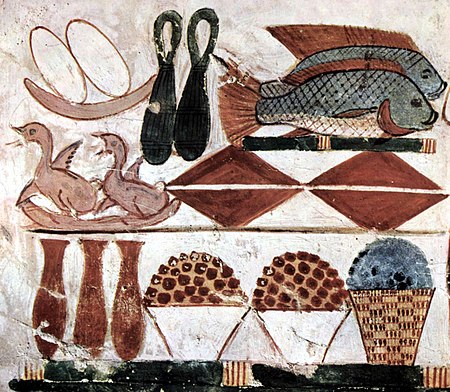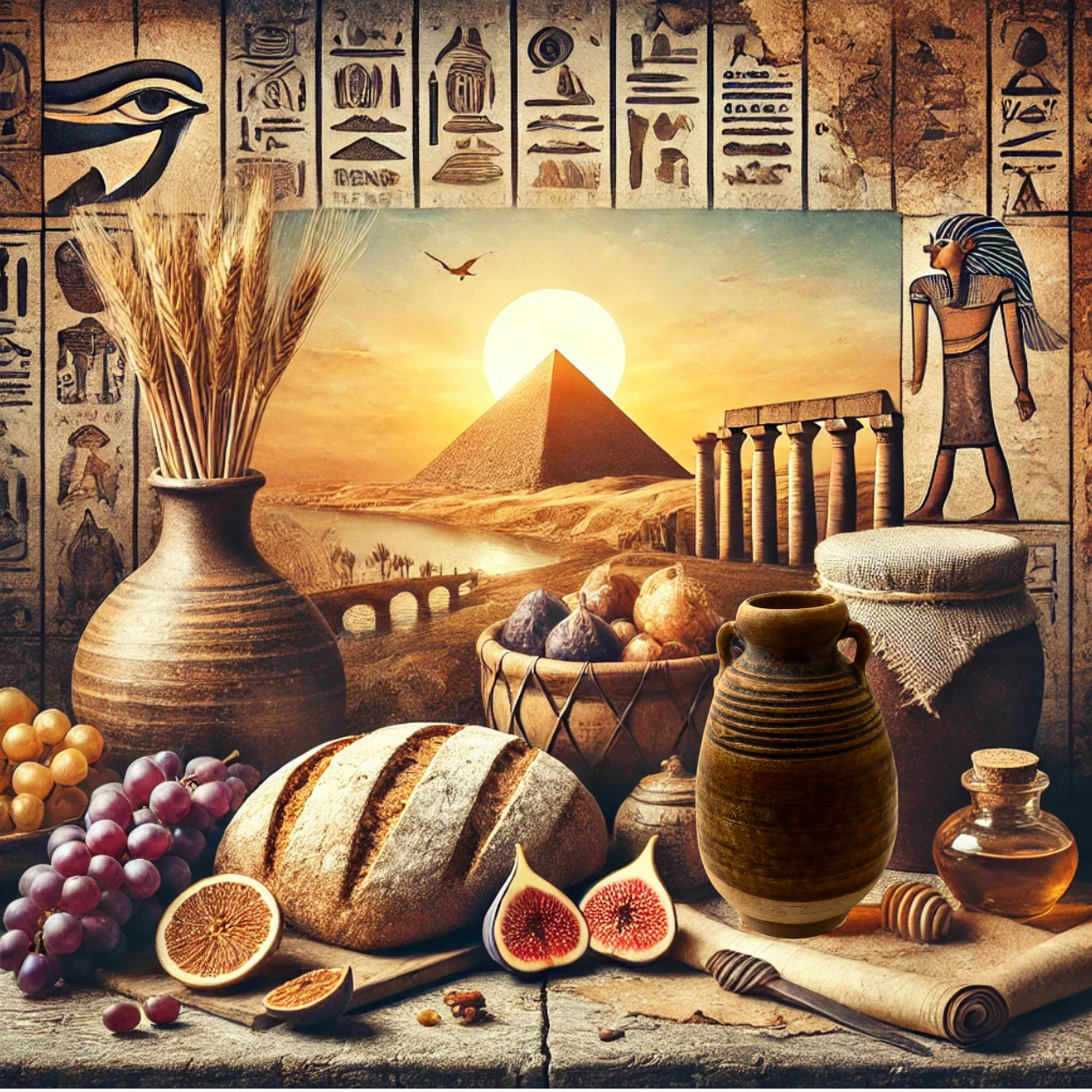Food in Ancient Egypt
The history of food in ancient Egypt reveals a diverse and flavorful cuisine that was rich in ingredients thanks to the fertile lands along the Nile River. This natural resource allowed ancient Egyptians to cultivate a wide variety of crops, including grains, vegetables, and fruits. The ancient Egyptians also utilized honey, dates, raisins, meats, birds, and fish, shaping a diet that reflects their environment and culture.
Types of Ancient Egyptian Foods
Ancient Egyptians enjoyed a variety of food types that highlight their advanced agricultural practices and unique food culture:
- Bread: Bread, called « aish » in Egyptian, was a staple food. Varieties like betaw, samit, and gargoush remain in use in some parts of Egypt, especially Upper Egypt.
- Meat and Fish: Egyptians consumed beef, goose, chicken, fish, and goat, often served on special occasions.
- Vegetables and Grains: Onions, garlic, radishes, lettuce, cucumbers, and leeks, as well as grains like wheat, barley, lentils, and sesame, were common ingredients.
- Fruits: Popular fruits included figs, sycamore figs, nabq (a berry), grapes, pomegranates, melons, and plums.
- Dairy and Oils: Dairy products like cheese and butter were made from milk. They also extracted oils from sesame, castor, and radish seeds.
- Drinks: Beer and wine were common beverages, highlighting the sophisticated brewing practices in ancient Egyptian food history.
Eating Customs in Ancient Egypt

Dining customs in ancient Egypt show a focus on family and ritual. Egyptians enjoyed three meals daily, with bread at the center of every meal. A dessert of fruit or honey pastries was typical. They flavored their food with an array of spices, such as anise, cumin, and cinnamon, illustrating an early appreciation for seasoning and food preservation.
Pharaonic Dishes and Everyday Foods
Bread and beer were staples across social classes, often accompanied by vegetables like onions and garlic, as well as fruits like figs and grapes. Soups and jams were made from available ingredients, while wealthier Egyptians enjoyed meats, jars of beer and wine, fruit baskets, buttered bread, eggs, and pastries. Middle-class Egyptians had modest portions of meat or fish with vegetables and fruits, showcasing an early example of food culture in history.
Food Offerings and Burial Practices
Food offerings were essential in ancient Egyptian religious practices. Bread, cow-shaped pastries, beer, honey, dates, and meats were common offerings to gods and buried with the deceased. Tombs contained food items like beef cuts, grains, and pigeon soup, believed necessary for the afterlife.
Ancient Egypt’s food history is a testament to the civilization’s resourcefulness and rich culinary traditions that continue to influence Egyptian cuisine today.
To read more for Influence of the traditional food culture of Ancient Egypt on the transition of cuisine and food culture of contemporary Egypt.

